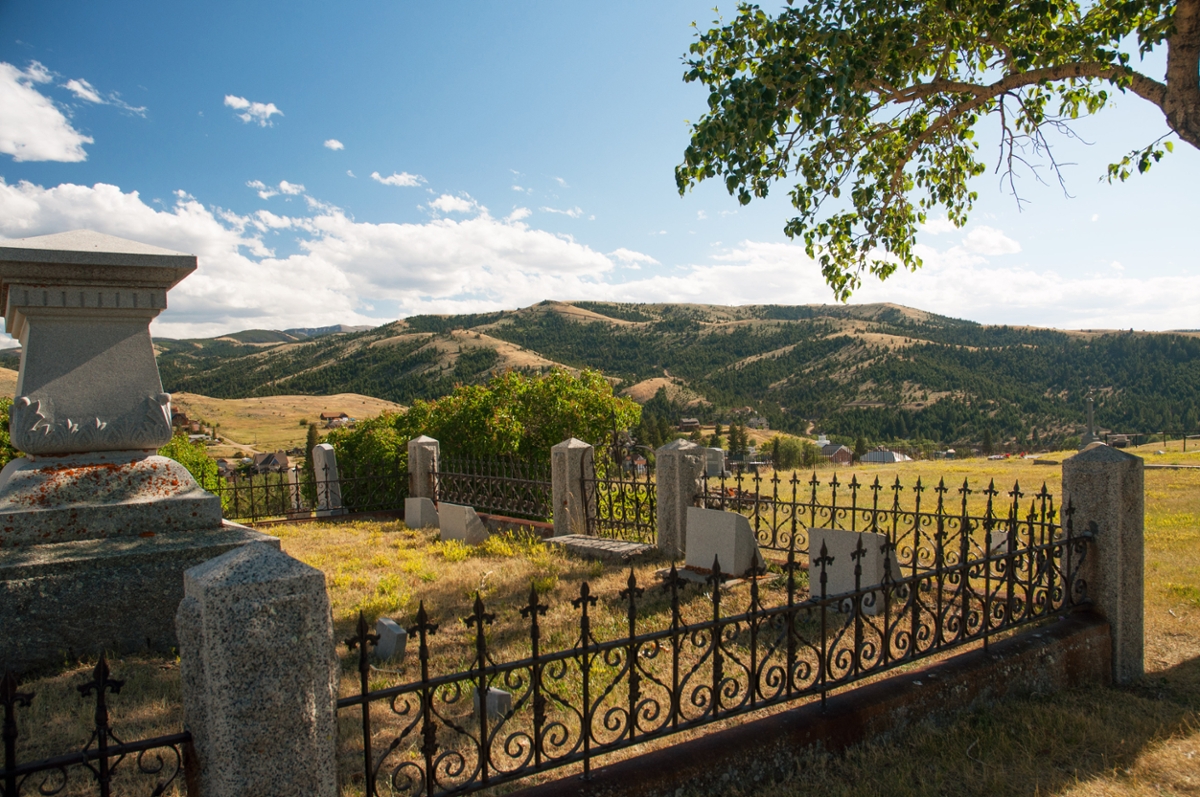Virginia City: Montana’s first Incorporated town (Part 2 of 2)
 The Virginia City Cemetery overlooks its namesake town below. (Photo by the Rick and Susie Graetz)
The Virginia City Cemetery overlooks its namesake town below. (Photo by the Rick and Susie Graetz)
As with the other mining camps, the placer gold didn’t last forever and Virginia City began its decline. By the late 1860's, the population had dropped to about 2,000, and by 1890 only 600 people remained.
In 1875, several controversial votes turned over the seat of the territorial government to the thriving town of Helena, formerly Last Chance Gulch. In the early 1990s, a short-lived new life was given to Virginia City with the dredging of gold in the gulch. By 1937, though, this activity, too, ended.
Today’s Virginia City, with its 190 people, is a stable, tourist-oriented community serving as the county seat of Madison County and an important link to Montana’s heritage. Views of the past have been well preserved here through the magnificent restoration of its buildings.
Years ago, Charlie and Sue Bovey, ranchers from the Great Falls area, began a long-term love affair with this southwest Montana community – one that grew into the first major, privately funded preservation program in the nation. The work they did is of monumental proportions and has preserved Virginia City’s 1860's look. Nearly all of the town’s buildings are original with none brought in from elsewhere.
The Virginia City Players, the oldest continuing summer-stock theater operating west of the Mississippi, persists in its quest to draw and entertain visitors just as its predecessors’ performances for the miners did more than a hundred years ago.
A stunning, authentically restored 1910 No. 12 Baldwin steam locomotive trundles the scant 1.5 miles on the Alder Gulch Short Line to Nevada City. Operated on weekends by volunteer engineers, this mechanical work of art adds to the pioneer town atmosphere and attracts train buffs of all ages. The sound of the steam being released and the whistle blowing always causes excitement. During the week, a gasoline-powered engine moves the cars. Much of the credit for the success of the railroad goes to John Larkin of Michigan.
Only a dozen or so of Nevada City’s original buildings remain. What prevails here now is also a result of the magic of the Boveys.
In the 1950s, in order to create the realistic look of an early-day Montana gold camp and save historic buildings, the Boveys had many period edifices from the late 1800's moved here from other parts of the state and Wyoming. The structures are so well laid out that to the uninitiated it appears that Nevada City is a town everyone exited at once, leaving the buildings behind in good standing.
The state of Montana, through the Heritage Commission, owns the Bovey assets in Virginia City and all of Nevada City — a total of 248 buildings. The job of preserving and continuing the restoration is now in the hands of the Montana Heritage Commission, a branch of the Montana Historical Society. The commission received a $1 million grant from the National Park Service for building stabilization. The first project, the Sauerbier Blacksmith Shop, recently was completed. Another million-dollar grant, this one from Ruth McFarland, built the McFarland Curatorial Center, a state-of-the-art preservation and restoration center.
The lure of exploring one of the cradles of Montana history makes Alder Gulch a place well worth spending several days in. Its physical setting between the Tobacco Root Mountains and Gravelly Range are an added attraction. Public roads approach scenic sites and signs of yesterday are everywhere.
The gulch and Virginia City come alive in the summer, but the quiet of fall, coupled with that season’s gold and orange, also makes it a good time to see this Montana treasure.
Rick and Susie Graetz | Department of Geography | University of Montana
